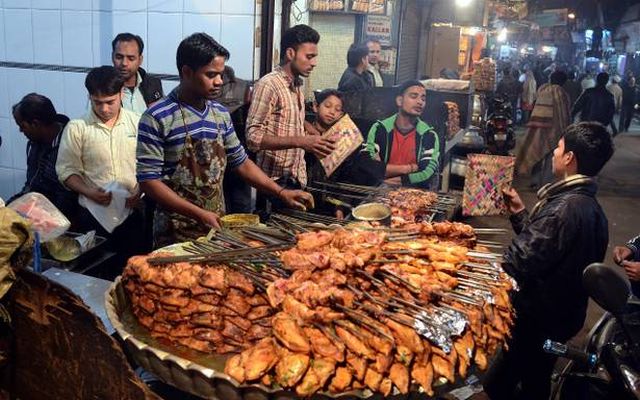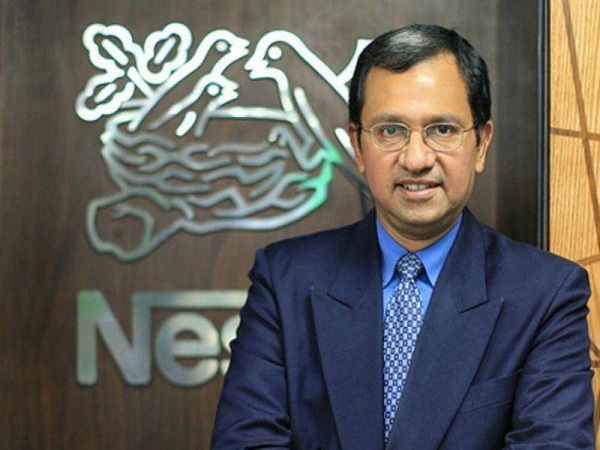
Of recipes and culinary practices: How the famed food of Old Delhi has changed with time
New Delhi : The walled city has long been a paradise for foodies but its culinary practices as well as the many famed eateries have undergone gradual changes over the years. The life of Sadia Dehlvi, belonging to one of the oldest families of Delhi, has run parallel to these changes and she takes us on a delicious journey to the walled city’s famous by-lanes and describes its changing food culture in her latest book.
For all of its fascinating sights, sounds and smells, many of us have a special place for “Purani Dilli” (Old Delhi) in our hearts. And “Jasmine & Jinns: Memories and Recipes of My Delhi” (Harper Collins; Rs 699; Pages 232), takes you a step closer to it. Dehlvi leaves no stone unturned to capture the little nuances that have gone into shaping the culinary customs in the much celebrated area.
However, the book is not entirely focused on food and will not be very helpful if you are a beginner and looking for a comprehensive cookbook. It is partly a memoir, as Dehlvi interlaces Delhi’s food history with her memories and the stories of her growing up in the city. As one of the oldest families of the Walled City, her life has run parallel to the changing times and, thus, this is a fitting memoir of not only her family but also of the culinary culture in the area. The language of the book is simple and is mixed with Urdu words which are explained in English.
They say one should not judge a book by its cover but book covers indeed have a certain pull for readers. The cover of this book is not very appealing. Images are just arranged together in a collage that is least pleasing to the eye. But this is very well compensated by the images of Old Delhi’s legendary eateries when you flick through its pages.
Dehlvi lists some of the most popular shops in the walled city — Kanwarji’s Confectioneries, Old Famous Jalebiwala, Natraj Dahi Bhalle Walle, Shiv Chhat Bhandaar and Chaina Ram Confectioners — which Delhiites still love to visit. She describes the life, culture and traditions of her community “Dehli Saudagaran” — Hindus of the Khatri caste who embraced Islam at the instance of Sufi cleric Hazrat Shamsuddin in the mid-13 century. The community later moved to the city from Punjab at the invitation of Emperor Shah Jehan in 1657.
“Dehlvi” was adopted as the family name by the author’s paternal grandfather to honour their long association with the city. In the initial chapters, Dehlvi details the food traditions of different empires that ruled Delhi. She credits the Mughals for adding colour and aroma to the city’s culinary art and gives us a peek into their lavish tables.
The author goes on to explain Old Delhi’s Muslim culture, lifestyle and “mehman nawazi”. She gives us interesting details like how beef isn’t appreciated, except for nihari and kebabs in Dilli Dastarkhwan. It is considered the poor man’s meat and “taxing” on the digestive system.
She tells us how “Dilliwallahs” remain extremely particular about meat cuts and also about “taseer” of the food on the body. The title of the book “Jasmine & Jinns” is influenced by Dehlvi’s childhood memories, filled with the fragrance of chamelis and the stories about jinns that “were always around”.
She gives an account of how her childhood home, Shama Kothi — named after the popular Urdu film and literary magazine founded by her grandfather and edited by her father — used to host gatherings attended by stalwarts of Urdu literature like Kaifi Azmi, Majrooh Sultanpuri and famous film celebrities. Dehlvi credits her learning about traditions, culture and cooking to Apa Seeda — the author’s and her siblings’ caretaker — and to her mother.
However, the food culture detailed by Dehlvi is not the same any more. The city is changing with the times. For instance, today you will not find thick kadhai milk at every corner of the city. Also, if people want to binge on some good kebabs or qorma, they prefer ordering it online or visiting a fancy restaurant than take the pain of preparing elaborate dishes at home.
The “strict” table rules that the author talks about in the book have also changed. The tradition of “having at least one family meal together” is on the wane due to busy schedules where family members don’t even get to see each other on a regular basis. The same goes for saying prayers before starting the meal or not criticising the meal served on the table. Too much to ask from today’s generation!
Coming to recipes, Sadia shares her all-time favourite classic dishes which include “aloo salan”, “khadey masale ka qorma”, “yakhni pulao”, “nargisi kofta”, “biryani” and “shammi kebab”.
In addition, there are recipes for seasonal specialities and festivals. So, if you love to cook, eat and feast and Purani Dilli’s vibrant food culture fascinates you, then this book will give you some serious hunger pangs!
(Parul Soni can be contacted at parul.s@ians.in)
—IANS

